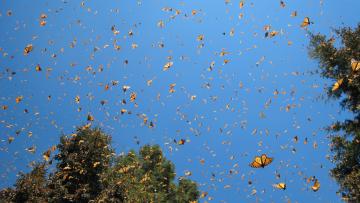
Kansas Biological Survey & Center for Ecological Research
Our vision: To lead scientific discovery that fosters broad appreciation of the vital interactions between humans and the environment.
Research programs and services

Terrestrial ecosystems

Aquatic ecosystems

Geospatial research
Research programs and services line 2

Aquatic assessment

Kansas Natural Heritage Inventory

Monarch Watch

The KU Field Station
In addition to our focus on terrestrial, aquatic and geospatial research, we manage the University's biological field station. Founded in 1947, the KU Field Station has grown to 3,200 acres across three sites and welcomes all researchers. The 1,650-acre core research area, just 20 minutes from main campus, is open the entire KU community for study in any subject and includes five miles of public trails.
Learn more
Donate
Want to support ecological research, teaching and outreach? Make an unrestricted donation or choose your area of giving. Give online or get in touch.Research highlights

Annual Report 2022
In 2022, our researchers rebounded with more than $15M in active awards, growth in our research community, expansion of our facilities, a significant rise in our outreach activities, and planning to increase diversity, equity, inclusion and belonging (DEIB). Through our report, we share statistics, stories and photos.Friday Ecology Seminars
We host weekly seminars, open to the public, during the spring and fall terms. Join the mailing list for notifications and reminders of upcoming seminars. See our current schedule and visit our YouTube channel for video recordings of talks.
Upcoming & previous talks
Quick links, frequent contacts & service centers
- Contact
- Make a gift
- Media inquiries
- KU Field Station nature trails
- KU Field Station public programs
- Reserve the Armitage Center
- Central Plains Center for BioAssessment
- INVAM (arbuscular mychorrizal fungi)
- Kansas Applied Remote Sensing (web maps)
- KansasView website
- Lake assessment & Harmful Algal Blooms
- Mapping Kansas Ecosystems (StoryMap)
- Monarch Watch
- Native Medicinal Plant Garden
- Prairie Park prairie monitoring project
- Rare species data & project reviews
- Resources for our researchers, staff & students
- Safe + Inclusive Fieldwork resources
- Soil Analyses Service Center
News

Monitoring Prairie Park prairie
In May 2023, four KU ecologists began a year-long study to monitor the Prairie Park prairie remnant, following the accidental broadcast spraying there by the City of Lawrence. We will post updates on the project, along with photos, here.Events
Resources for our researchers, staff & students
The full page of resources includes information and contacts on a wide of variety of office procedures, as well as KU contacts. Two direct links are provided here to help you get contact information quickly in urgent situations.


